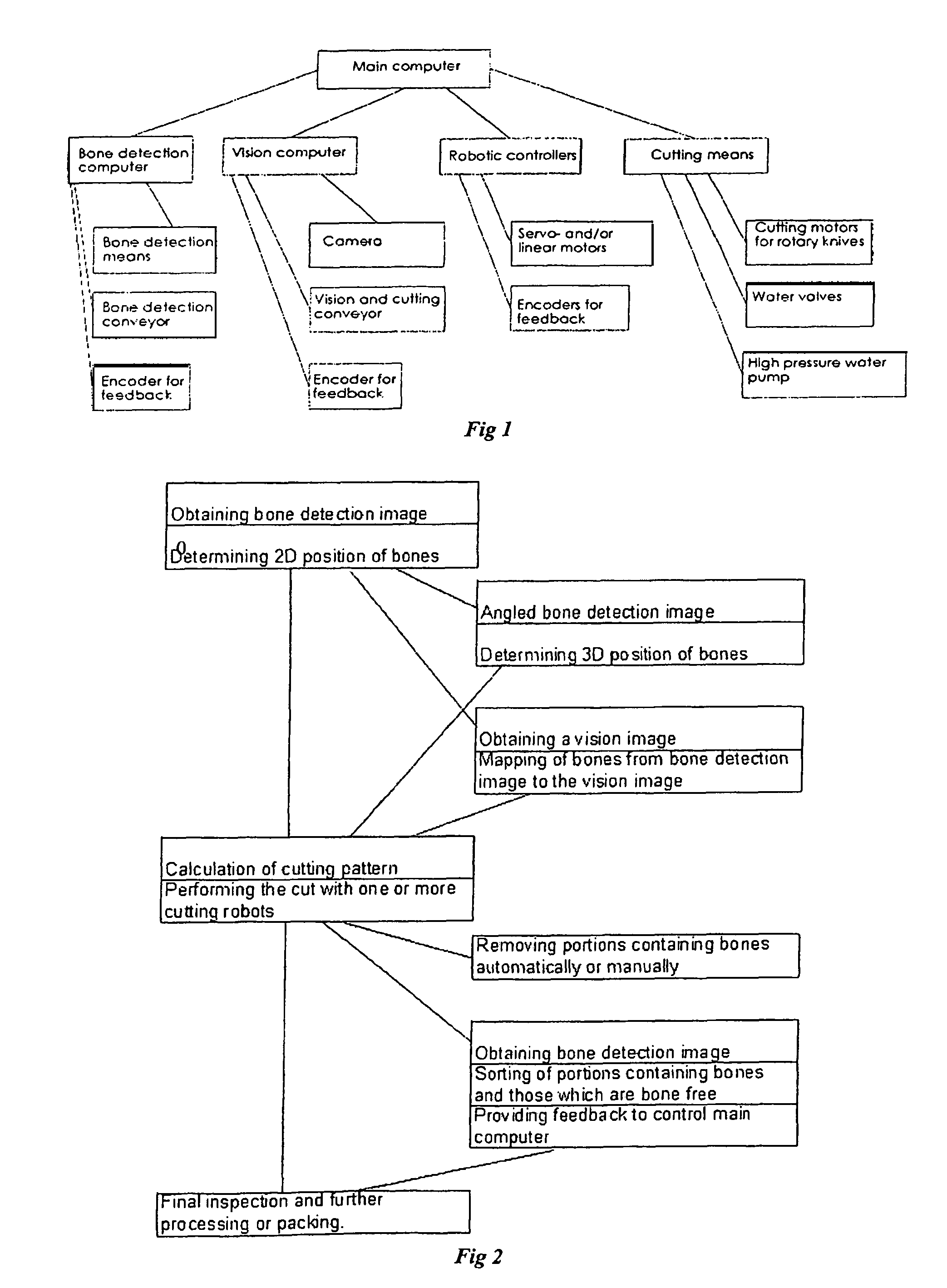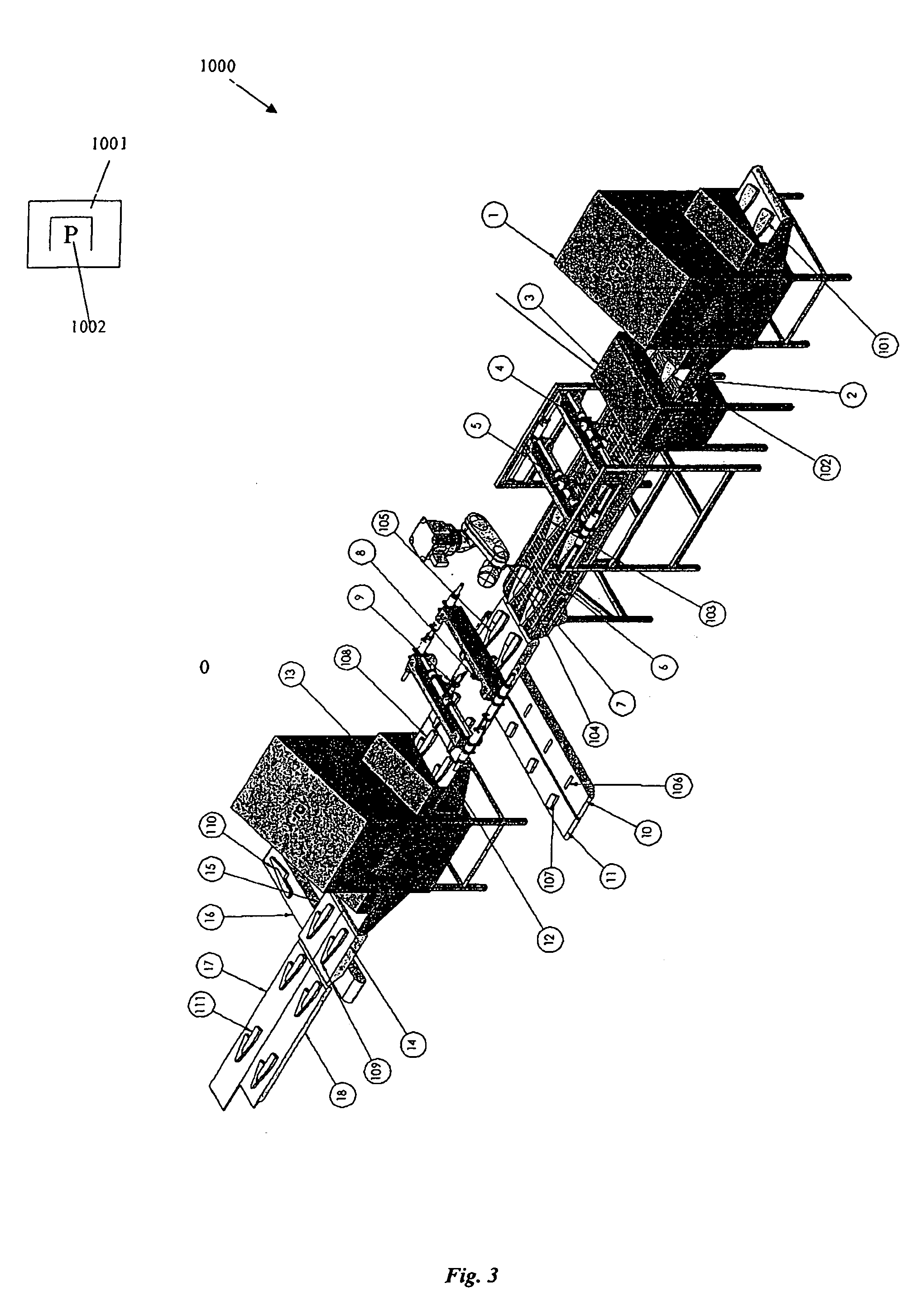Food processing apparatus for detecting and cutting tough tissues from food items
a food processing and tissue technology, applied in poultry processing, butchering, instruments, etc., can solve the problems of not working well on very fresh fish, not practicable in all cases to super chill, and current methods or machines that do not work, so as to reduce the risk of affecting the quality of food items, and reduce the effect of aging
- Summary
- Abstract
- Description
- Claims
- Application Information
AI Technical Summary
Benefits of technology
Problems solved by technology
Method used
Image
Examples
Embodiment Construction
[0093]In general, this invention is related to automatic cutting of food products where the food items would typically tough tissues such as bones, fat or cartilage inside them and part of the objective of the cutting process is to cut out the tough tissues. For simplicity, in the following it will be assumed that the tough tissues are bones, but the tough tissues may just as well be cartilage and the like.
[0094]Typically consumers prefer to get their food without bones and bone free products will therefore commonly sell for a higher price than products with bones inside. It is therefore usually desirable to cut the food products in such a way that the section which includes the bones is kept to an absolute minimum size. This means that the cutting process must have an ability to cut the food products as close to the bones as possible.
[0095]As cutting processes are commonly not 100% accurate it can happen that bones can remain in sections of the food items which were supposed to be ...
PUM
 Login to View More
Login to View More Abstract
Description
Claims
Application Information
 Login to View More
Login to View More - R&D
- Intellectual Property
- Life Sciences
- Materials
- Tech Scout
- Unparalleled Data Quality
- Higher Quality Content
- 60% Fewer Hallucinations
Browse by: Latest US Patents, China's latest patents, Technical Efficacy Thesaurus, Application Domain, Technology Topic, Popular Technical Reports.
© 2025 PatSnap. All rights reserved.Legal|Privacy policy|Modern Slavery Act Transparency Statement|Sitemap|About US| Contact US: help@patsnap.com



